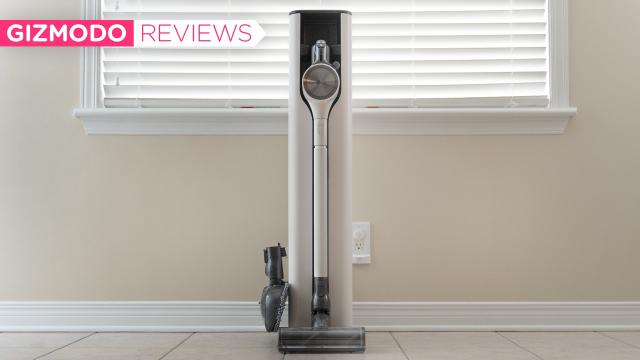As a vacuuming fanatic with a deep-seated hatred of crumbs on my floors, the greatest thing to happen to my daily routine was the convenience of a cordless vacuum — but they’re not perfect. Cordless vacs are often a pain to empty without creating another mess, and if you’re not willing to permanently attach a charging dock to a wall, they can feel like a tool without a home. With its CordZero all-in-one, auto-empty, cordless stick vacuum, LG has solved some of those pain points, but its steep price tag delivers a sting of its own.
Dyson was one of the first companies to ditch vacuums with power cords altogether, and the company continues to improve and upgrade cordless vacs (and vacuums themselves). But while Dyson has brought innovations like dirt detection and even crumb-spotting lasers to your daily cleaning routine, the company has ignored some of the other challenges of cordless vacs, including limited battery life, and keeping your vacuum and all of its accessories organised. LG’s CordZeroThinQ A9 Kompressor+ may not offer an LCD display counting down the vacuum’s remaining run time, but it does deliver some features you won’t find on any of Dyson’s offerings, and arguably they’re features that are more useful for actually keeping your home neat and tidy.
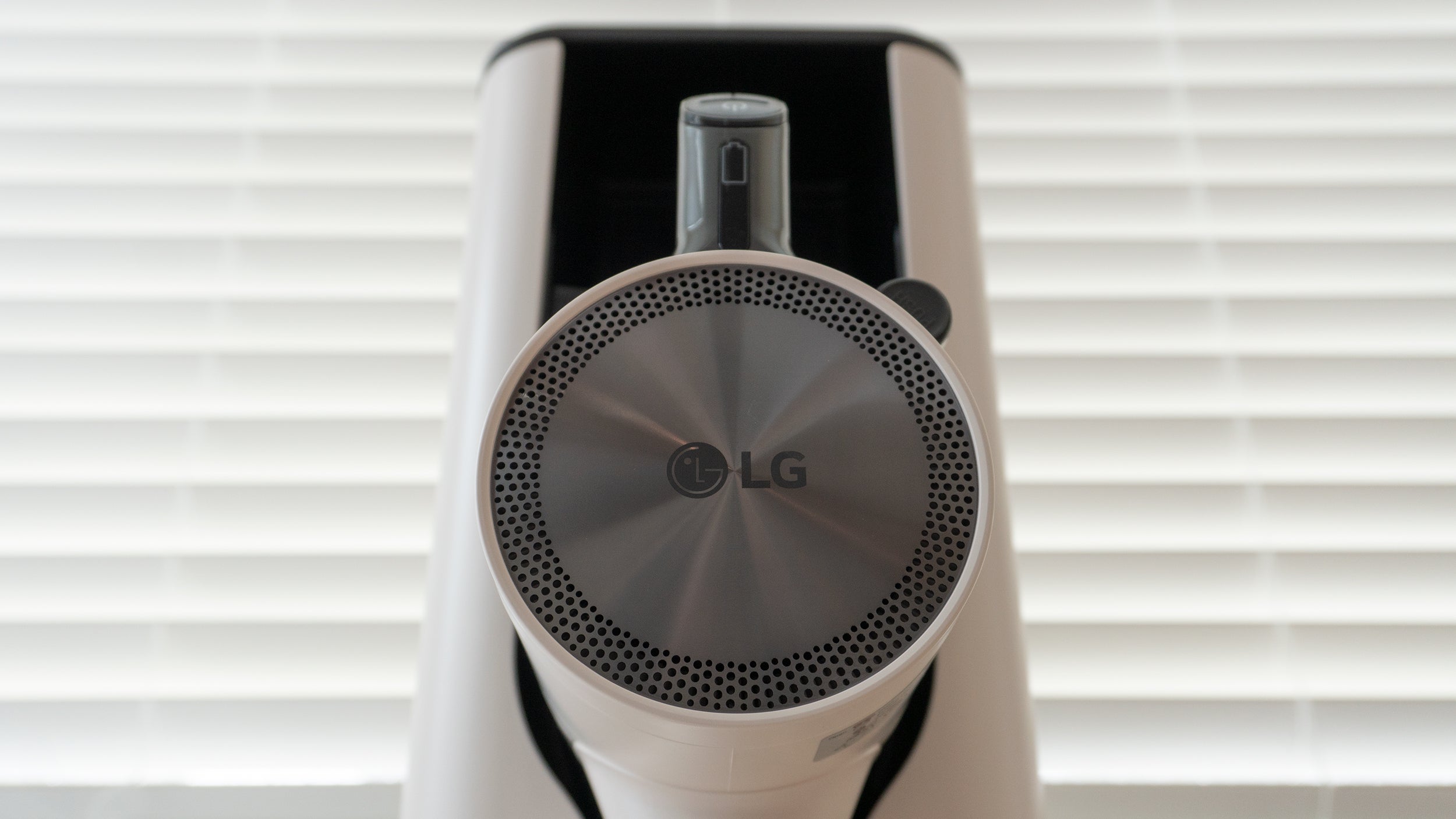
LG CordZero ThinQ A9 Kompressor+
WHAT IS IT?
A cordless vacuum with a tower docking station that charges the vac and automatically empties its dust bin for you.
PRICE
A$1,319
LIKE
Emptying the vacuum itself is a simple one-button affair. The tower docking station also charges a second swappable backup battery at the same time.
DISLIKE
The tower itself stores dirt and debris in disposable vacuum bags that need to be periodically replaced: an added long term cost for an already very expensive vacuum cleaner.
A Solid Stick Vacuum With Some Welcome Upgrades
One of my biggest complaints with cordless vacuums from LG’s competitors is the use of intermittent triggers instead of a simple on/off button, which means they have to be continually squeezed the entire time you’re cleaning to keep the vacuum running.
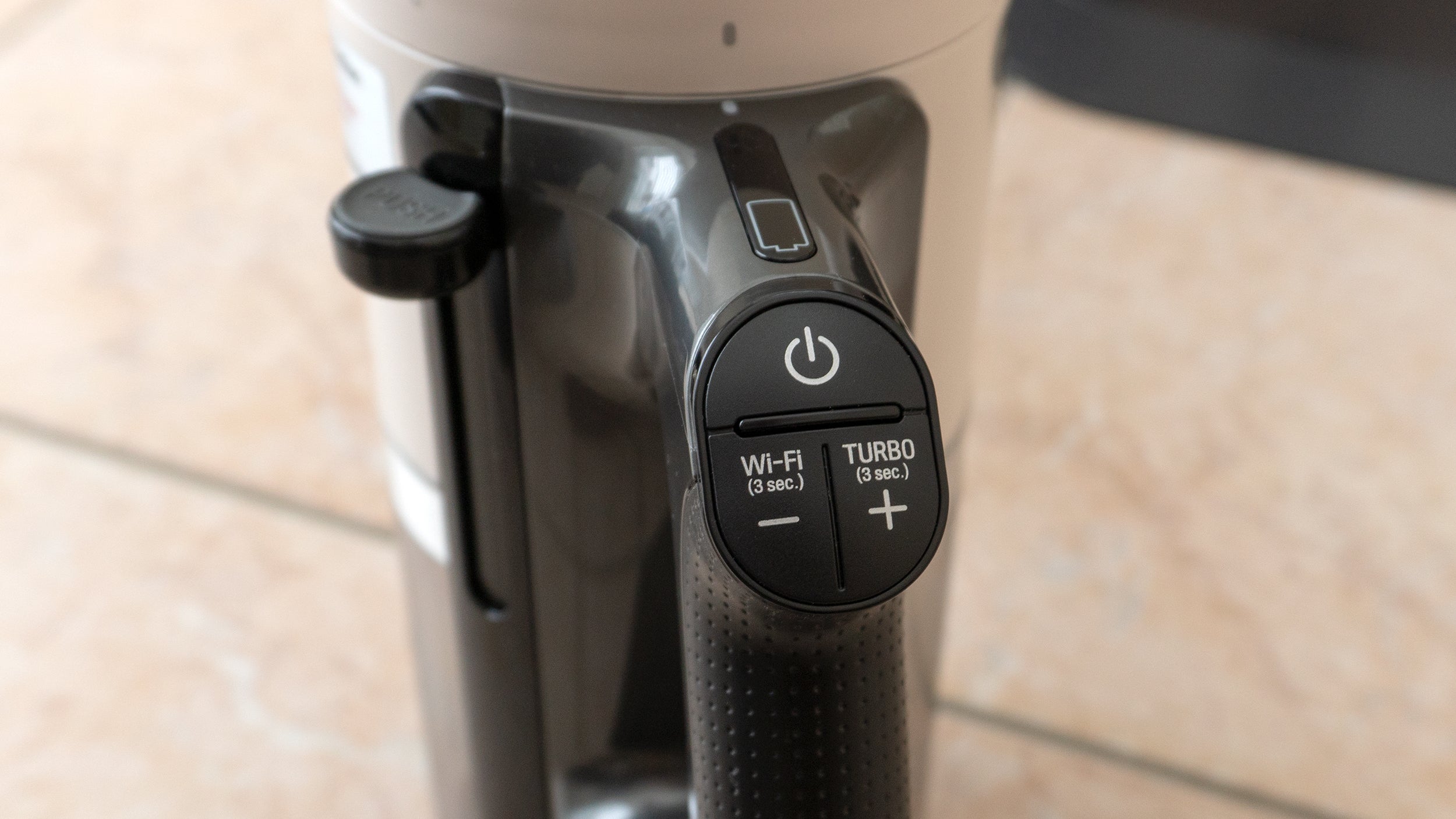
On a single battery, the CordZero ThinQ A9 Kompressor+ will suck for upwards of 60 minutes on its lowest power setting. Squeezing a trigger for an entire hour is an unwelcome ask. Instead of a trigger, the CordZero ThinQ A9 Kompressor+ — which I will henceforth just refer to as the A9 Kompressor+ — features an on/off button that only has to be pressed once to turn the suction on or off, along with a pair of buttons used to step between three levels of suction power.

Another feature that LG has carried over from older models to the A9 Kompressor+ is the namesake compression mechanism, which uses a simple sliding lever to compact all of the dust and dirt in its bin so that it doesn’t have to be emptied as often. It works, but most of what I suck up in our home is hair and dust bunnies that just spring right back up every time you try to smoosh them.
As someone who’s been covering and reviewing cordless vacuums for years, the one piece of advice I have for those looking to upgrade is to splurge on a model with a battery that can be easily swapped out. Electric motors demand a lot of power and battery tech still relatively sucks, which means that at some point you’re inevitably going to have your cordless vacuum die halfway through a clean, and it’s good to have an immediate solution.
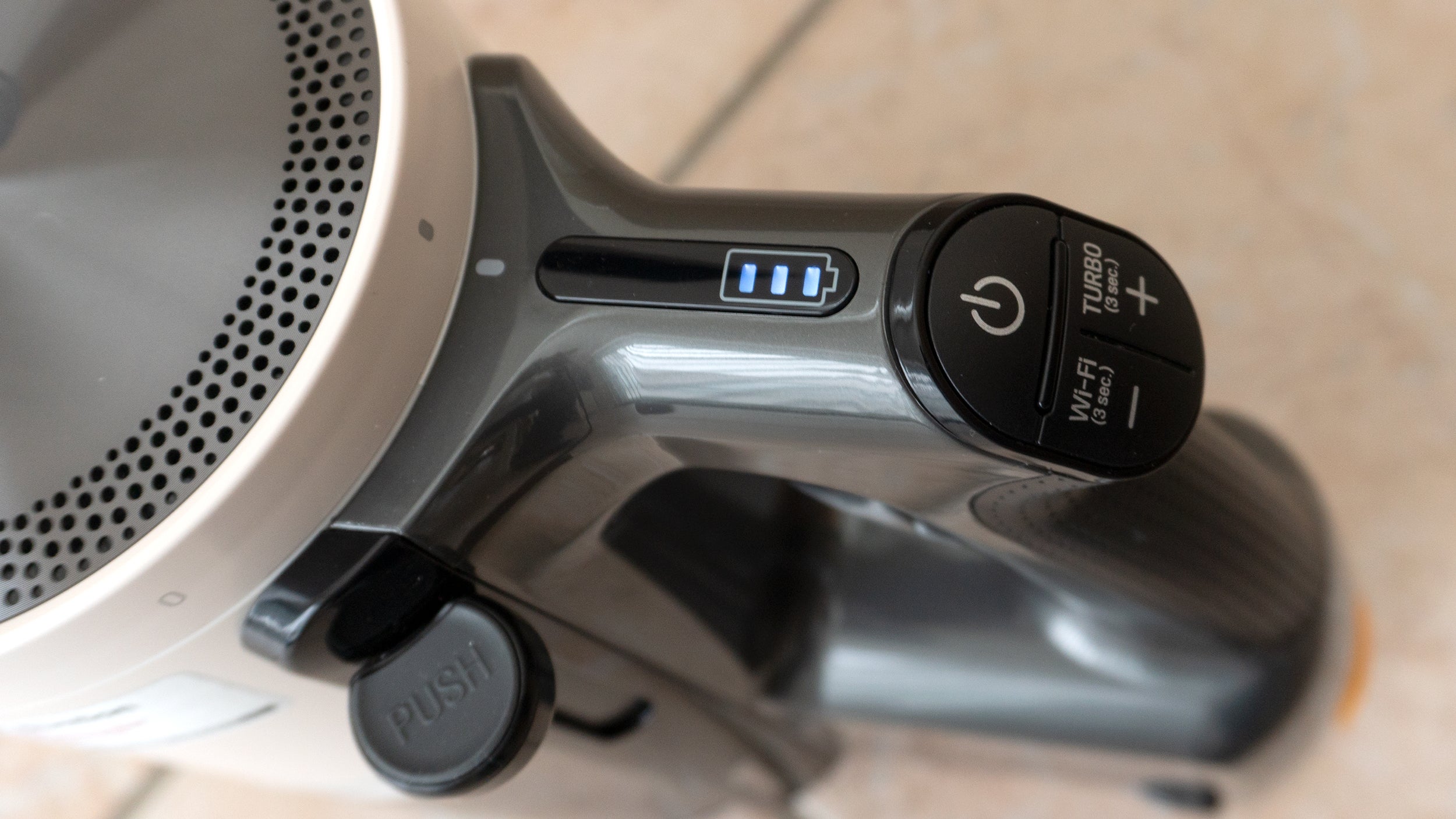
It’s especially a concern with the A9 Kompressor+, because its battery metre is simply three glowing LED bars. Unlike Dyson, whose flagship cordless vacuums provide a fairly accurate countdown in minutes of how much cleaning time you’ve got left, trying to gauge how long the battery will last is almost impossible when you find yourself on the last glowing LED. Even a simple display showing the battery’s charge level as a percentage would have been a welcome improvement here.
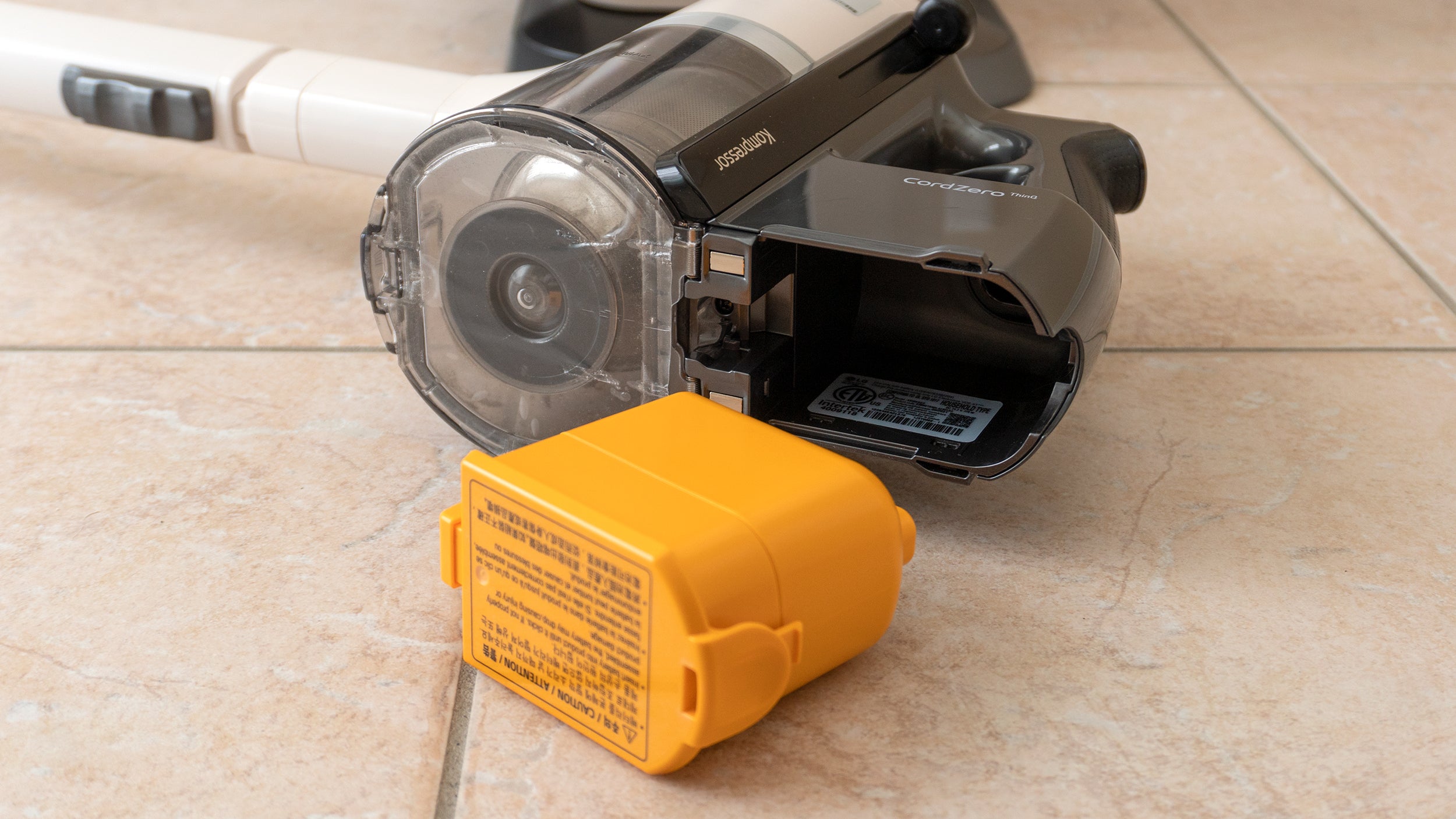
Thankfully, the A9 Kompressor+ does feature swappable batteries that are relatively painless to install and remove, and it comes with a spare, plus another hefty accessory that ensures you’ll always have a fully-charged extra battery on hand.
A Tower to Call Home
More often than not, the cordless vacuums in our house are left lying on the floor, or awkwardly propped up against a piece of furniture, because I haven’t gone to the trouble of permanently attaching a charging dock to any of my walls. It’s partly because I’m too lazy to hunt for studs behind the drywall and install them properly, but also because I don’t want holes left in my walls when the vacuum is replaced in a few years and the dock is no longer needed. LG’s solution to that problem is a white monolothic tower standing just shy of 40 inches tall, which the A9 Kompressor+ calls home.
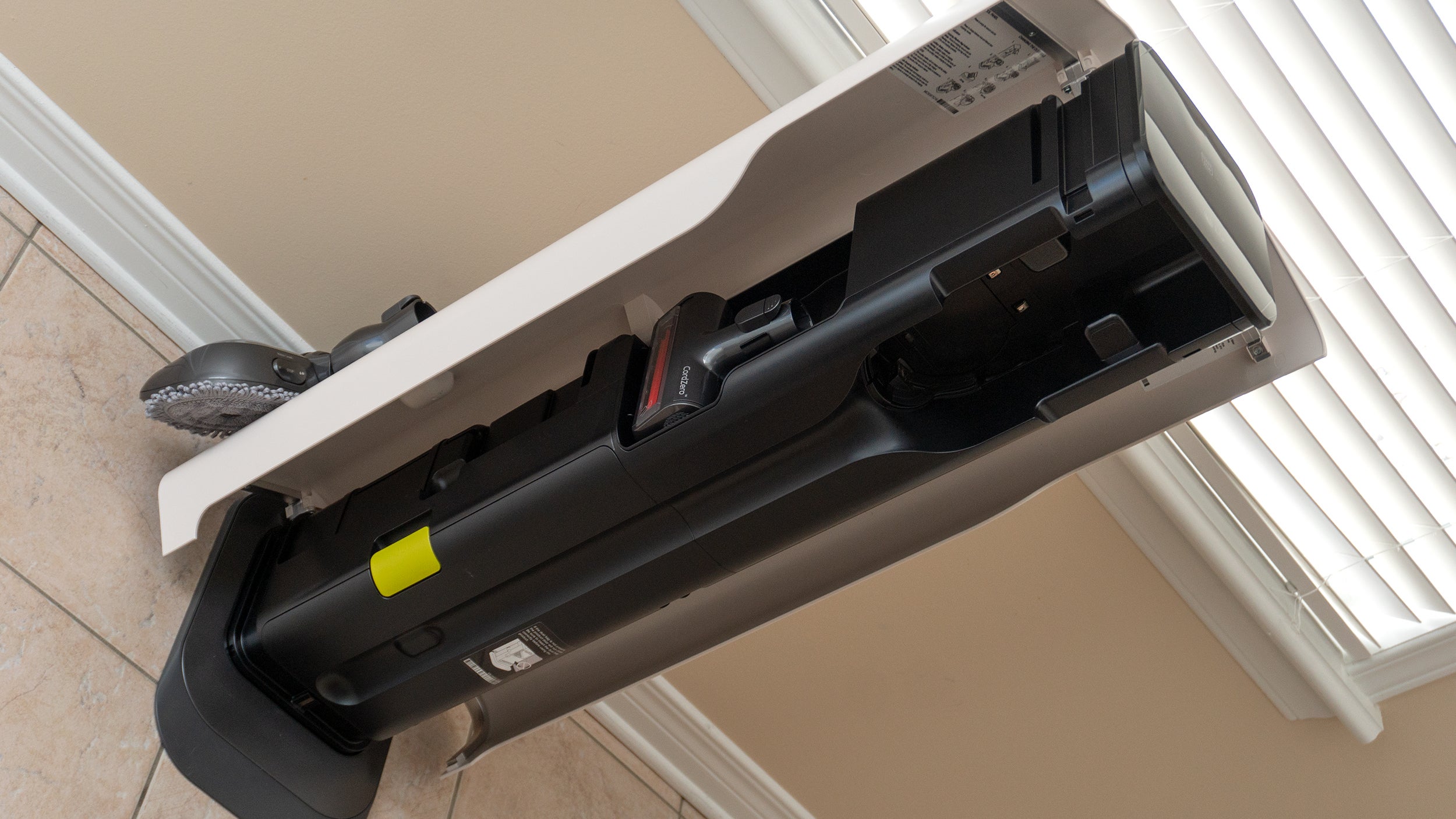
It’s big and heavy, and some may find it an eyesore, but for me the usability solutions it offers far outweigh its questionable aesthetics. The A9 Kompressor+ vacuum itself docks on the front of the tower and automatically starts recharging when it’s attached, while wing-like doors on either side open to reveal dedicated storage space for accessories and cleaning tools, which, in our home, are MIA most of the time. The tower also features hooks on the outside of each door that can be used to store alternate cleaning heads that are too large to fit inside.
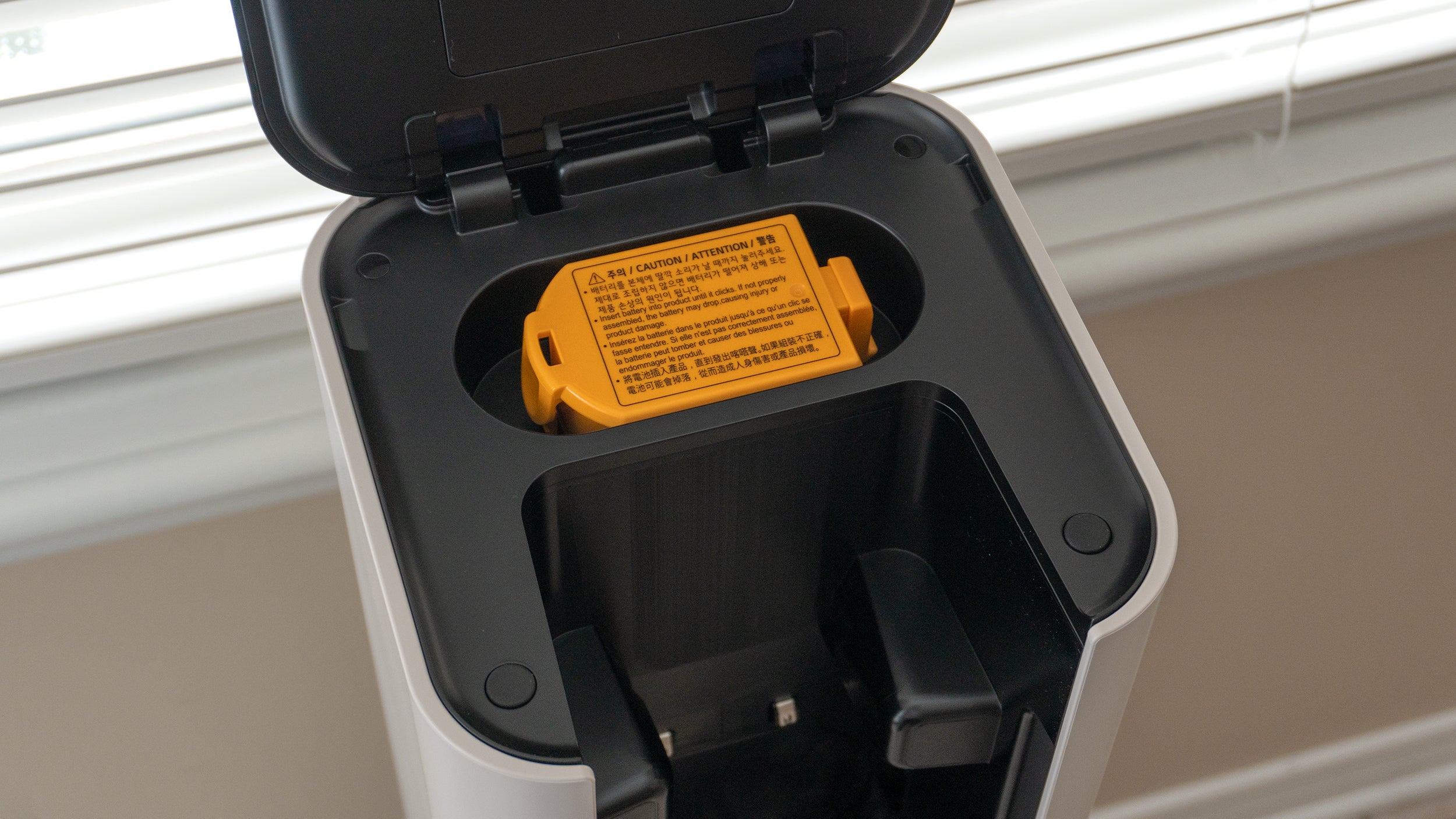
The included spare battery also has a home in the tower beneath a lid on top that keeps it fully-charged at all times. It’s a solution to a problem that Dyson still hasn’t solved on the vacuums it includes a spare battery with, and assuming you remember to always keep a battery in this charger, it effectively doubles the runtime of the A9 Kompressor+.

The tower isn’t just for keeping the vacuum’s accessories organised and charged. LG further justifies its existence (and not-tiny footprint) with a new Auto Empty feature. With the A9 Kompressor+ vacuum docked, pressing a button atop the tower starts a cleaning cycle which automatically opens the bottom of the vac’s dust bin, sucks out all the dirt inside without a spec of dust escaping into the air, and then seals it all back up again. It’s not quiet, but it works very well, and much better than manually emptying a stick vac’s dust bin directly into a garbage can which always ends with a cloud of dust particles escaping and often requires some manual poking and prodding with fingers to get all the dirt and hair dislodged from the bin.

There’s a catch, however. The dust and dirt sucked out of the A9 Kompressor+ doesn’t magically disappear. Instead, it’s stored inside the tower in a vacuum bag that will regularly need to be replaced. Removing a full bag is a streamlined process that ensures dust doesn’t escape in the process, and the frequency of changing it will vary on how filthy your home is. A replacement three-pack will cost you A$59, and while that probably won’t break the bank, it is an extra recurring cost for a vacuum that already costs A$1,319.
Does It Suck?
Investing in a self-emptying vacuum wouldn’t be much good if the vacuum itself wasn’t good at sucking and filling itself with dust and crumbs, but after a few weeks of testing I’ve found the A9 Kompressor+ does hold its own against products from competitors like Dyson.

The cleaning head is basic and no-frills but it works well at grabbing most dirt particles using a spinning brush inside. It’s cold and icy this time of year where I live which means a lot of rock salt gets dragged into our home on shoes. The cleaning head occasionally has a hard time grabbing larger chucks of salt on the first pass, but with a few back-and-forth passes it does eventually get every last piece. Three levels of suction power are offered, but for most of my day-to-day cleaning I find the medium setting (which LG calls the Power Mode) is the most effective at snagging crumbs and larger pieces of dirt on a single pass, but that brings the runtime down to about 30 minutes per battery.

To fit into the 40-inch-tall tower, the A9 Kompressor+ features a telescoping wand, which at first was a feature I really hated as it requires you to extend and retract the wand every time you grab it from the dock. But since the vacuum can still be used with the wand shortened, it actually makes vacuuming furniture and stairs much easier than when using the A9 Kompressor+ as a hand tool, so I’ve learned to embrace it.
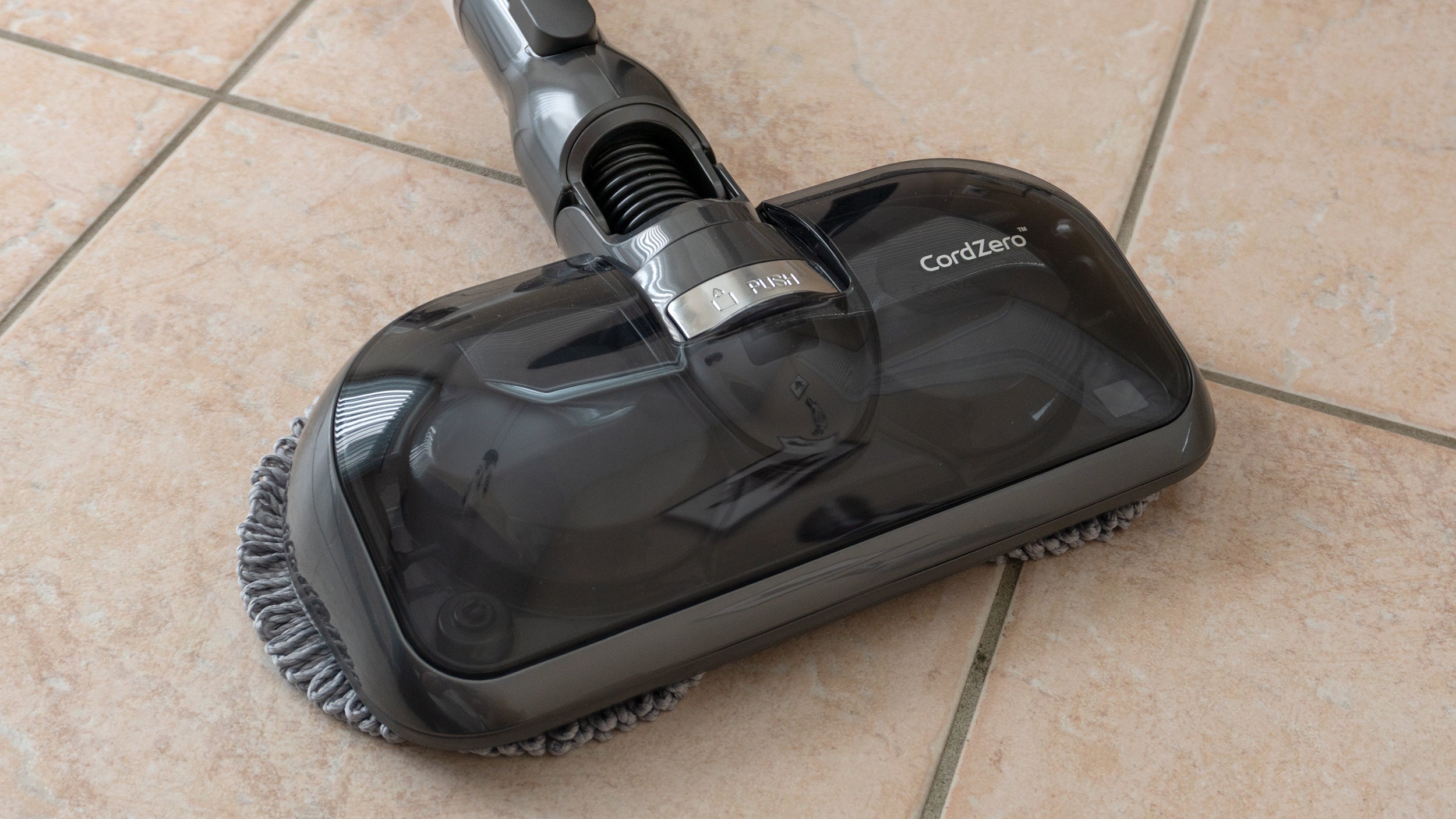
In addition to the standard cleaning head, LG includes a Power Mop head with the A9 Kompressor+ for washing floors, but I found it kind of a mixed bag.

On the underside are two washable pads that spin (powered by the vacuum’s suction) while water from a reservoir on top is sprayed onto the floor in the process. There are two settings for the flow rate of the water, but it can’t be controlled from the stick vac’s handle, so if you’re accustomed to using cheap pump-action floor mops, you need to adapt your technique with the Power Mop accessory.
I had assumed the mop attachment operated similar to carpet cleaners, where the dirty water was also sucked up afterwards, but that’s not the case. The spinning pads are really just there to do all of the scrubbing for you, while the dirty water is left on the floor to evaporate afterwards. The Power Mop’s tank also has to be completely emptied and dried before storing it back on the tower, and you’re not supposed to use any detergents or soaps in it, just water. It was kind of a let-down, and I think there are better and more convenient ways to mop and clean hard floors after a vacuum.
Can You Really Justify a $1,319 Vacuum?
Companies like Dyson have certainly raised the ceiling when it comes to the price of a vacuum cleaner, but with the self-emptying CordZero ThinQ A9 Kompressor+, LG has really taken the pricing to new heights. There’s no way around it, A$1,319 for a vacuum cleaner is expensive, even for one that handles the messy task of emptying the dirt bin. If money’s no object and clean floors are your passion, the A9 Kompressor+ won’t disappoint — assuming you’ve got a place to store the tower and keep it out of sight. If you’re on a tighter budget, for around A$900 you can get a similarly capable cordless vac from LG that includes an extra battery and a charging stand to keep everything organised, but the responsibility of emptying and cleaning it is all on you.
Editor’s Note: Release dates within this article are based in the U.S., but will be updated with local Australian dates as soon as we know more.
